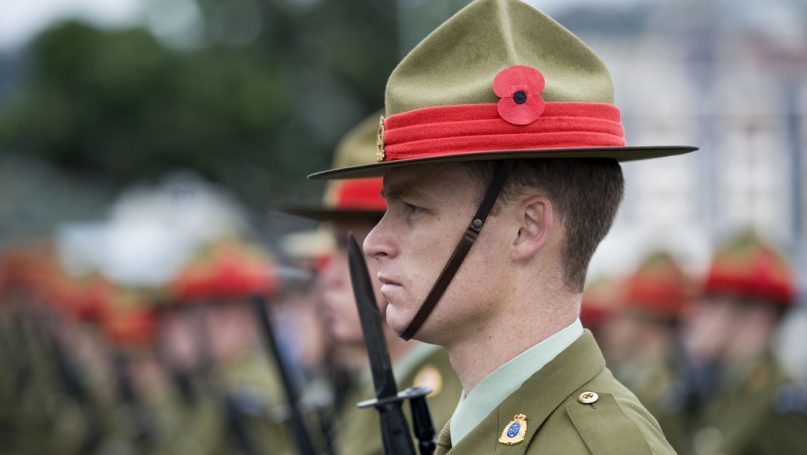
in|trin¦sic: adj. ‘belonging naturally’
Religion exists at the foundations of the modern international system, albeit as a negative, as that force of violence which in 1648 led Europe to launch its fleet of new Westphalian states headlong into the raging waters of the Thirty Years War. Much like the ancient maritime success of Athens in deploying small but effective trireme vessels against the traditional warships of Persia, these swift moving proto-secular states quelled the sectarian political waters, wrested power away from medieval religious structures, and navigated safe passage to a modern world.
Such an account, at least, echoes much of the conventional IR telling about the beginnings of modern international affairs. In 2000, Notre Dame scholar Daniel Philpott offered what has become a seminal counter-narrative arguing that the ideas of religion played a central role in the Westphalian settlement itself. “Had the Reformation not occurred”, writes Philpott, “a system of states would not have arrived, at least not in the same form or in the same era … the intrinsic content of Protestantism itself points to sovereignty.” (World Politics, Vol.52 No.2, italics added).
With Philpott’s logic in mind, and beyond a specific focus on the impact of Protestant ideas in 17th century Europe, might we suggest that the intrinsic content of religious tradition informs aspects of sovereign state identity in the 21st century? In the month of May, The Religion Gap briefly explores how the intrinsic content of religion informs two contrasting sovereign commemorations of war. In the current post, our context is Australia. In the next post, our focus is Japan.
The service of soldiers of the Australian and New Zealand Army Corps (ANZAC) is commemorated on ANZAC Day, April 25. 2015 marks the centenary of the fabled and catastrophic landing of ANZAC forces at Gallipoli, Turkey, during the Great War. For many Australian citizens, to recognise ANZAC is to recognise the very birth of the nation itself in the crucible of war.
Whilst both Australia and New Zealand are modern secular states – the political theorist William Connolly describes Australia as “the most secular country I have yet to visit and the least haunted by religious wars” – the ANZAC story is memorialised in ways that highly resemble religious practice. These can take standard forms of civic religiosity (where the nation itself becomes the object of ritualised devotion) but they can also be intrinsically linked to traditional faith practices and beliefs.
For many Australians, for instance, the central Easter theme of the sanctity of life upheld in the shadow of death ‘belongs naturally’ with the commemoration of ANZAC. In a homily delivered at the Vigil Mass of Remembrance for the ANZAC Centenary, a ceremony attended by the highest political and military representatives of the nation, the Catholic Archbishop of Sydney summarised it thus: “Anzac Day always falls in the season of Easter. For all the seeming pointlessness of these young deaths, the white crosses that once marked the Gallipoli hills and the more permanent walled cross now at the beach cemetery are portents of Easter.”
Another theme intrinsic to both Easter and ANZAC is reconciliation between enemies. At Gallipoli there is a Turkish memorial quoting Mustafa Kemal Ataturk on the fallen Allied foes, including: Those heroes that shed their blood, and lost their lives …You are now lying in the soil of a friendly country. Therefore, rest in peace…After having lost their lives on this land, they have become our sons as well.
A third intrinsic connection is the theme of sacrifice. Monumentalised separately at cenotaphs and in churches, at times each are represented as belonging together. The Archbishop, once more: “At one end of this cathedral is a very fine statue of a young man, an unknown ANZAC, who died for his country. At the opposite end, on the front of our main altar, is an image similar in some ways, of another young man who died for His people, for all people. The echo is not accidental.”
Sanctity, reconciliation, sacrifice: three binding concepts intrinsic to both ANZAC and Easter. Some secularists may be concerned to uphold the prohibition in the Australian Constitution on “any law for establishing any religion, or for imposing any religious observance” (S.116). Some religionists may likewise fear an over-accommodation to State interest and the loss of prophetic power to criticise political authority. ANZAC is not Easter, the memorialisation of war by an Enlightenment settler state cannot conflate with a transnational religious tradition of ancient origins. Nevertheless, Philpott’s emphasis on the intrinsic content of religion offers one way to understand how faith tradition adds depth of memory to sovereign self-understanding, even in a secular state such as Australia. Lest it forgets.
Further Reading on E-International Relations
- Secularism: A Religion of the 21st Century
- United Moderate Religion vs. Secular and Religious Extremes?
- The Chimera of Freedom of Religion in Australia: Reactions to the Ruddock Review
- Opinion – Navigating Epistemic Injustices Between Secularism and Religion
- Religion in International Relations and the Russia-Ukraine Conflict
- Opinion – Getting Diversity ‘Right’ In Australia’s Nascent Space Industry Matters